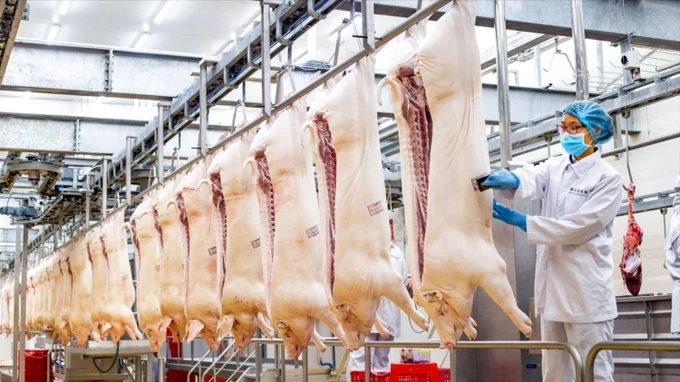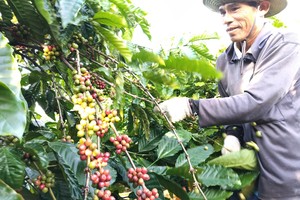
Many businesses in the livestock farming and food processing sector, be they domestic or FDI ones, are forming closed production – processing chains under the model of Feed – Farm – Food (3Fs). It begins from raising livestock and poultry in farms to processing meat from those animals using modern technologies before distributing end-products to consumers.
Vietnamese citizens can now enjoy both chilled and frozen pork as well as processed one. Some renowned pork processing companies in Vietnam include Masan, Dabaco, CP Vietnam, Vissan, or BaF.
However, statistics from the Department of Quality, Processing and Market Development (under the Ministry of Agriculture and Rural Development) reveal that there are currently about 70 industrial-scale meat processing factories with a total output of 1.3 million tonnes per year, accounting for 20-22 percent of the sold pigs.
This means most of the meat volume is freshly consumed via 24,000 small-scale slaughterhouses. Worryingly, more than 70 percent of these organizations are unlicensed. To have clean and delicious meat, it is essential to develop formal, larger-scale meat processing factories as well as modern, centralized slaughterhouses.
Understanding this, on December 30, 2023, the Prime Minister signed Decision No.1740/QD-TTg, approving the project ‘Developing slaughterhouses, meat processing factories, and livestock product market until 2030’. This project aims at improving the performance of slaughterhouses and meat processing companies in order to not only diversify livestock products offered on the market but also ensure food safety, disease-free status, quality, and added value.
It is set that by 2030, the proportion of cattle and poultry safely slaughtered in formal industrial factories will have reached 70 percent and 50 percent respectively. The export turnover of this industry will have been US$3-4 billion by then.
Deputy Minister of Agriculture and Rural Development Phung Duc Tien stated that in the two years of 2022 and 2023, the export values of the livestock industry were only half a billion dollars, which was extremely low. More importantly, the pig farming industry in the country should focus on both the domestic market of 100 million people as well as foreign ones.
























